Rainbow Logic
This blog post contains Amazon affiliate links. As an Amazon Associate, I earn a small commission from qualifying purchases.
Rainbow Logic is a cooperative group work task designed to give students practice with both spatial reasoning, deductive thinking, and communication with group members. One group member designs a 3 x 3 colored grid. The other group members must work together to determine the placement of each of the tiles on the grid.

Looking for more first day of school activities and puzzles for your classroom? I have a giant blog post dedicated to 40+ activities for the first week of school.
Here’s a few examples of some of these engaging activities for the beginning of the school year.
Origin of Rainbow Logic
I learned about Rainbow Logic from Elizabeth Cohen’s Designing Group Work: Strategies for the Heterogeneous Classroom. This is the same book where I found Broken Circles, one of my go-to first day of school activities. The Rainbow Logic activity actually originated from a resource called Family Math by Lawrence Hall of Science.
Elizabeth Cohen claims that in order to do group work well, you must invest a significant amount of time at the start of the year teaching students how to work together effectively in a group. Though this time is an investment, it will pay off as the year progresses.

Each activity in the book is designed to teach/promote a different group work norm that you want to instill in your students.
If you don’t have a copy of Elizabeth Cohen’s Designing Groupwork, there is a copy of the instructions for the Rainbow Logic activity on Stanford’s website.
Rainbow Logic Supplies
I created a task card to laminate and hand to each group. This details the supplies, objective, rules, and norms emphasized by the Rainbow Logic activity.
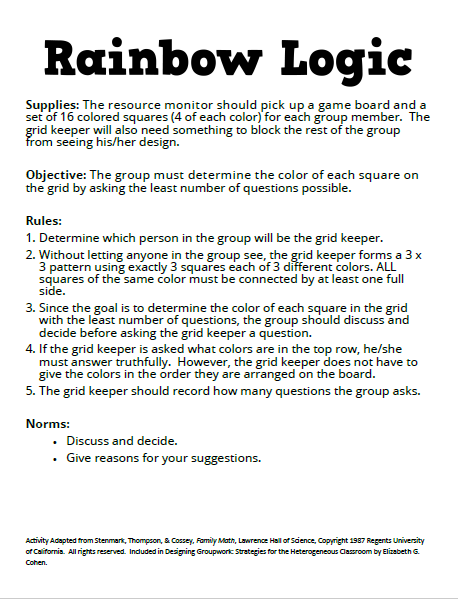
I also created game boards to print and give to my students as well as colored game pieces. If you have colored square tiles in your classroom, you can definitely use those as well.
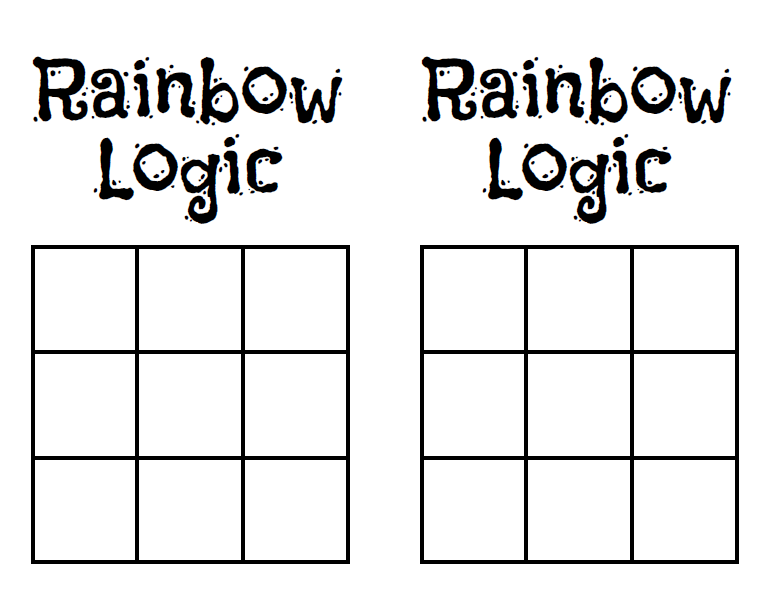
If you don’t want to worry about cutting the individual game pieces, you could just take card stock to a paper chopper and chop it into small squares.
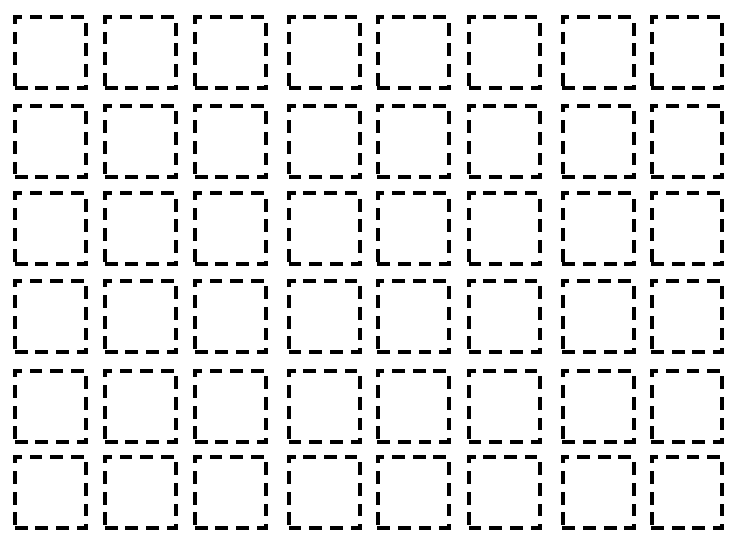
But, I wanted my pieces to be laminated, so I decided this was the easiest route for me.
MATH = LOVE RECOMMENDS…
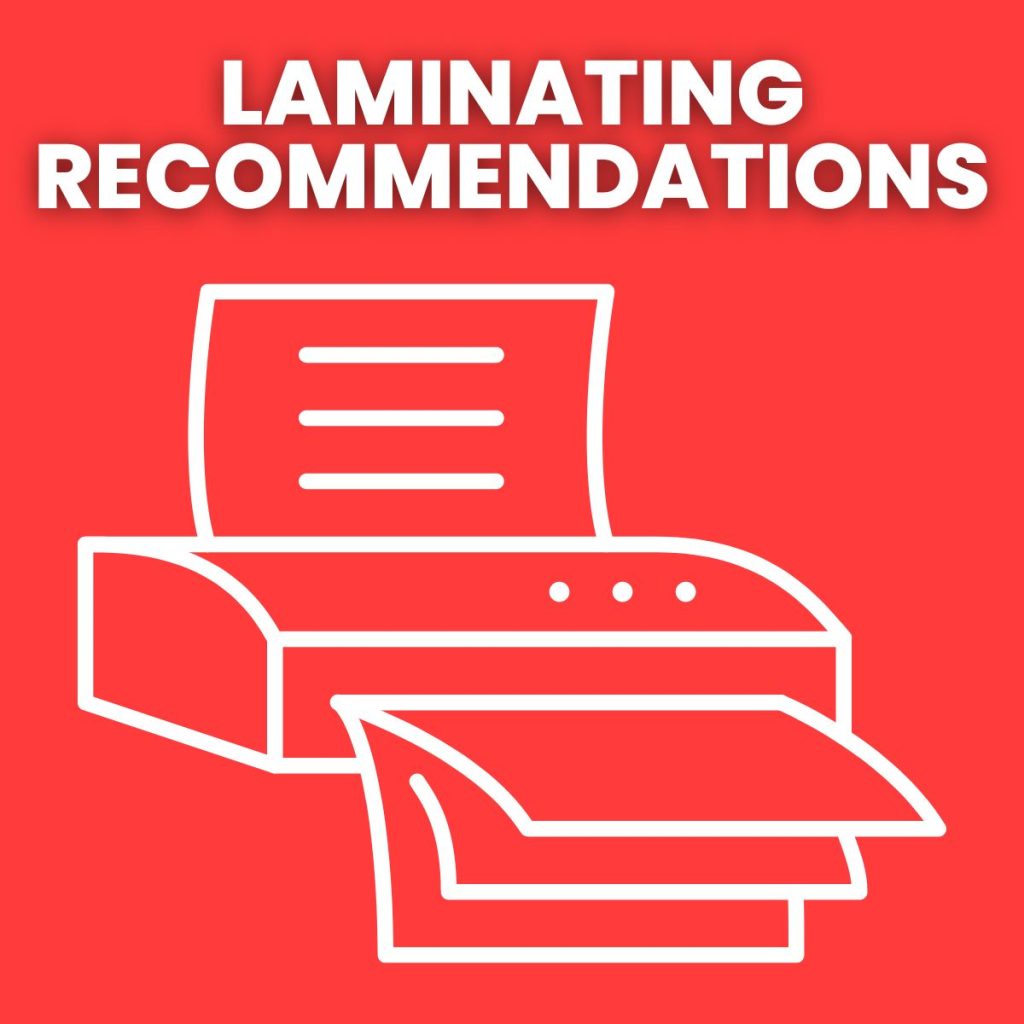
A laminator is a MUST-HAVE for me as a math teacher! I spent my first six years as a teacher at a school with a broken laminator, so I had to find a way to laminate things myself.
I’ve had several laminators over the years. I currently use a Scotch laminator at home and a Swingline laminator at school.
I highly recommend splurging a bit on the actual laminator and buying the cheapest laminating pouches you can find!
I just used the first four colors of paper that appealed to me. Any colors would work!

Each person in the group will need a game board and 16 pieces (4 of each color).
Rules for Rainbow Logic
The general gist of the game is that one person in the group makes a colored grid in secret. However, you can’t make just any grid. You can only use three colors, and you must use three of each of the three colors. And, all of the squares of the same color must be connected by at least one full side.
Here’s a visual of what’s allowed and what’s not:
For example, this placement would not be allowed since all of the pinks are not touching at an edge.
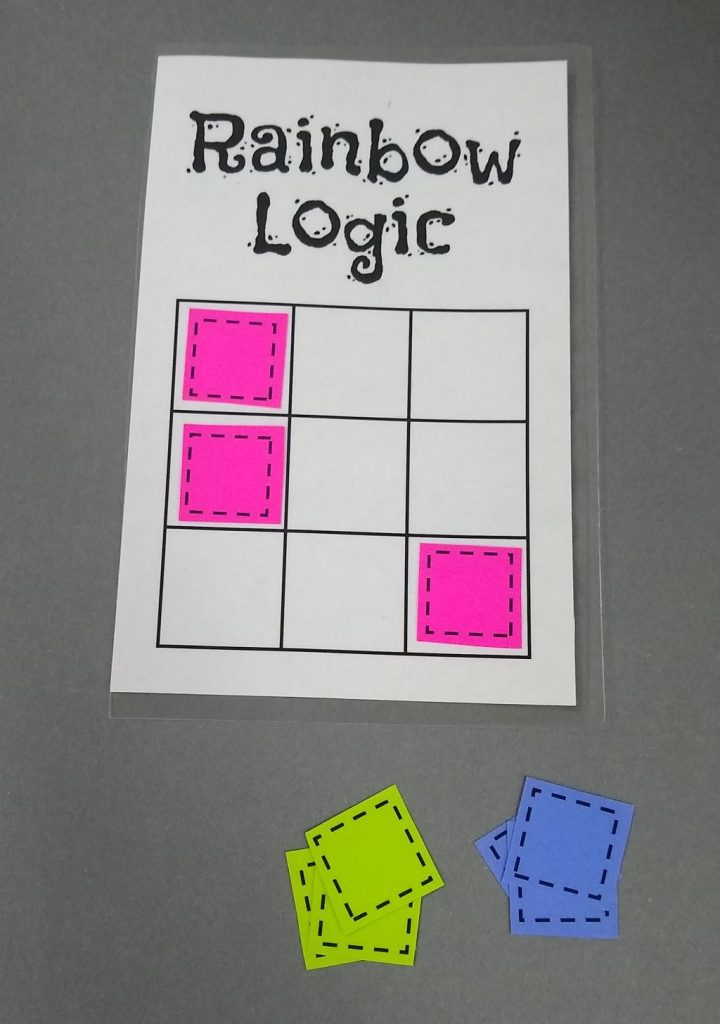
This, however, would be a valid arrangement.
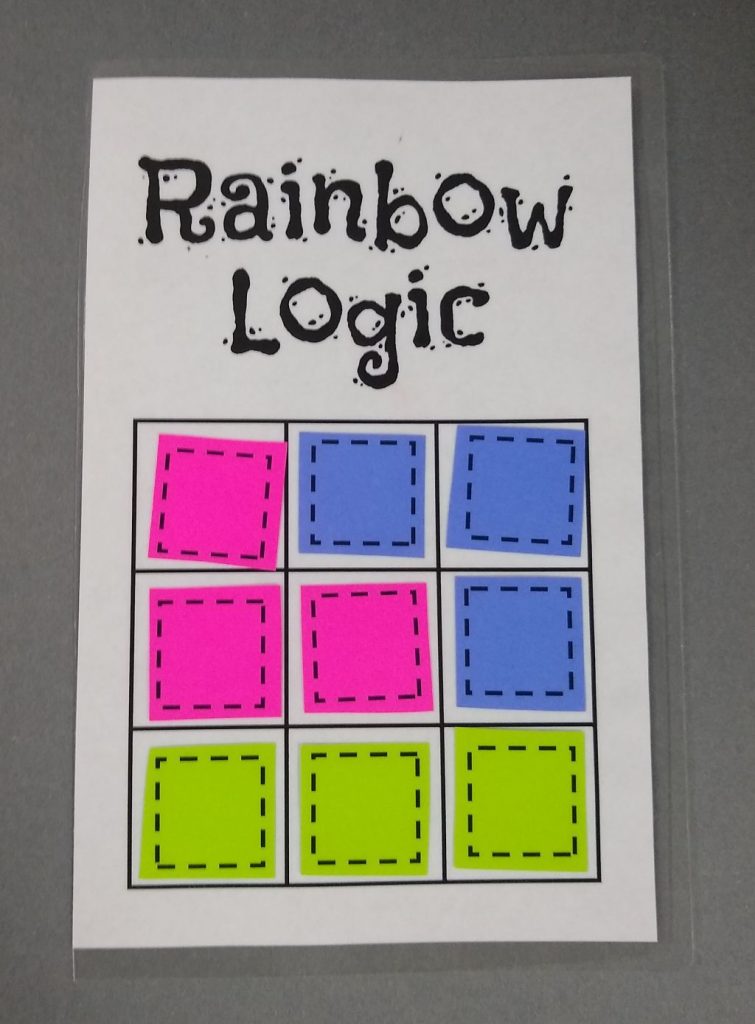
Once the grid is made, the group discusses which questions they should ask to figure out what color goes in each box of the grid.
I roped my husband into playing a few rounds with me to test it out. We realized that some lines of questioning lead to more efficient solutions than others.
Of course, when students are working on this in groups, they are asking questions as a group. Therefore, they need to discuss their questions before they choose which one to ask to see which questioning path will hopefully be the most efficient.
The norms this activity is supposed to promote are:
- Discuss and decide.
- Give reasons for your suggestions.
After each student has a chance to be the grid keeper, I plan on having groups fill out this reflection form:

Given that Shaun and I are both math teachers, we found the activity to be pretty simple and straight-forward. When Shaun was the grid keeper, I was able to figure out where to place each color with only four questions.
If your students are finding this activity too easy, you could easily change the rules to make it a bit harder. I would suggest taking away the restriction of having to use only three colors and exactly three of each color. This would make it much harder.
I’ve always complained that my students don’t know how to have a proper, productive discussion when I put them in groups. This year, I’m going to do something about it. I can’t recommend the book Designing Groupwork by Elizabeth Cohen enough.
Rainbow Logic Files
For the Publisher files, you’ll need to install these free fonts: Flavors, HVD Comic Serif Pro, and Open Sans.
Click here to SAVE the file to your device.
Rainbow Logic Task Card (PDF)
6436 saves – 275.66 KB
Lesson Reflection
After working through Broken Circles, I found that they adjusted to Rainbow Logic a bit better. I think it could have gone even better if we hadn’t been so rushed for time today. One group really impressed me with how well they were playing their roles during the Rainbow Logic activity.
I borrowed dividers from my neighbor teacher to help the grid keeper hide their designs.
The one thing that my students really struggled with was figuring out the rules of the game just from reading the game’s rules. Thinking about how it went after school, I was reminded that board games are not as prevalent with most students these days.
I can remember spending a good fifteen or thirty minutes trying to figure out how to play a new board game by reading the rules with my sister as a kid. My students have grown up with apps and computer games that walk you through a tutorial level. (I realize this is a generalization that doesn’t apply to all students!)
As groups worked to figure out the color placements, I challenged them to see if they could figure out the solutions in smaller and smaller numbers of questions. One group in my trig class really impressed me by figuring out the pattern of the entire grid in only TWO questions!
My freshmen didn’t have as great of discussions as my trig students, but I think that comes with age and maturity. My trig students were really good at discussing their questions and making sure it was a group question.
My freshmen still need a lot of work on that. One student would just blurt out a question, and the group would go along with it. Just shows me another thing we need to work on!
I ended up really, really, really loving this activity. I think it’s a definite keeper!
Here’s some action pics:

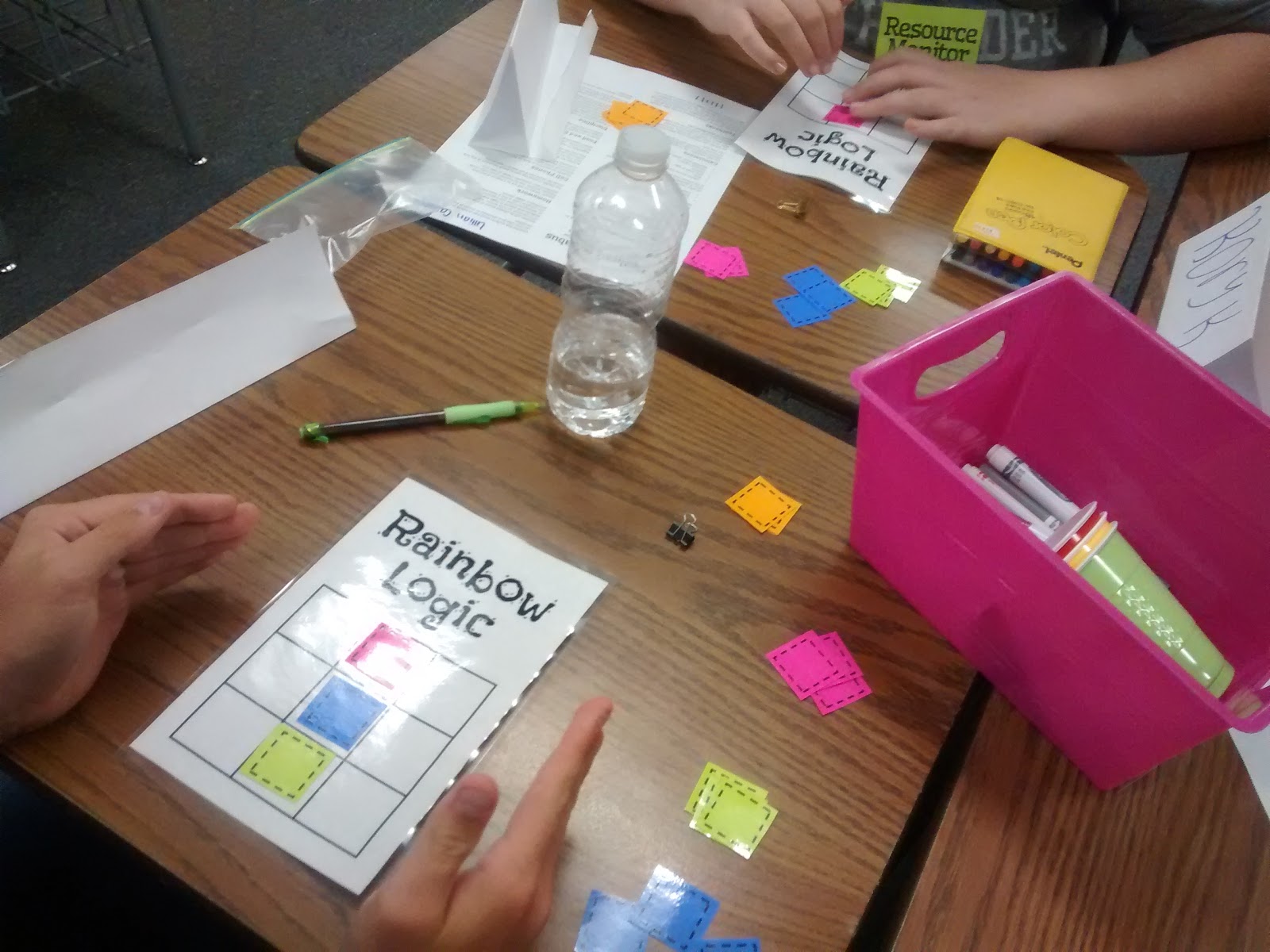
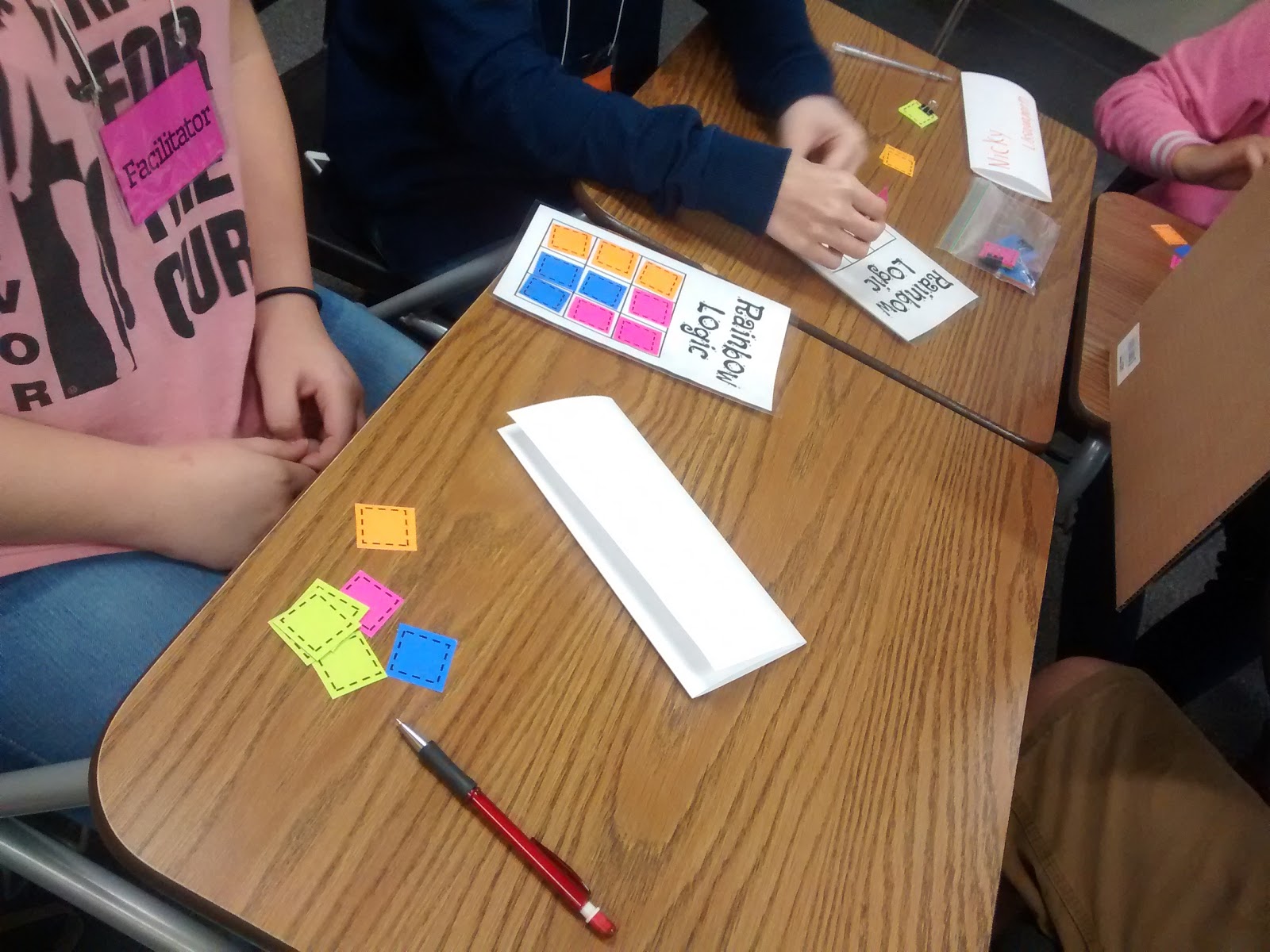
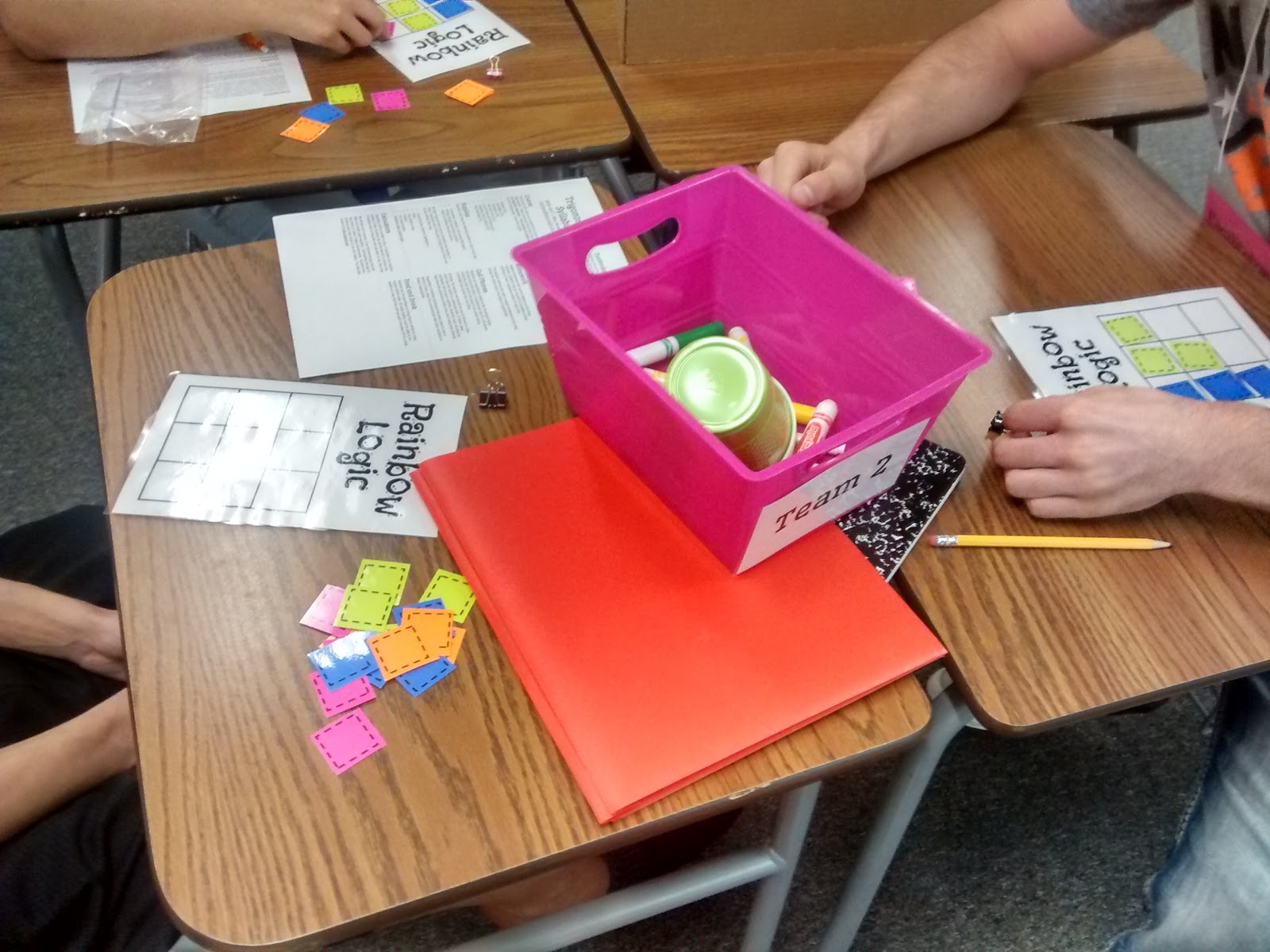
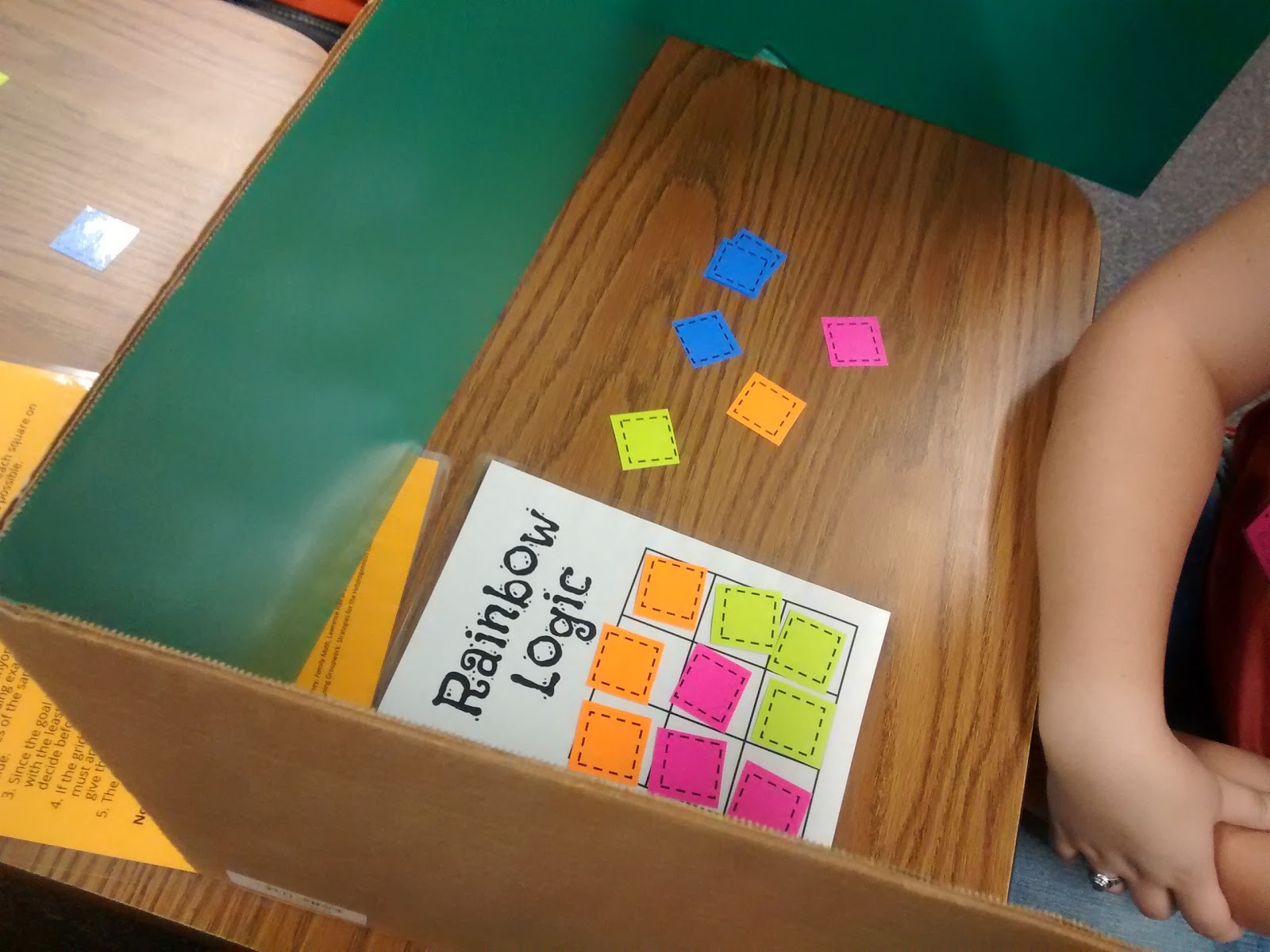
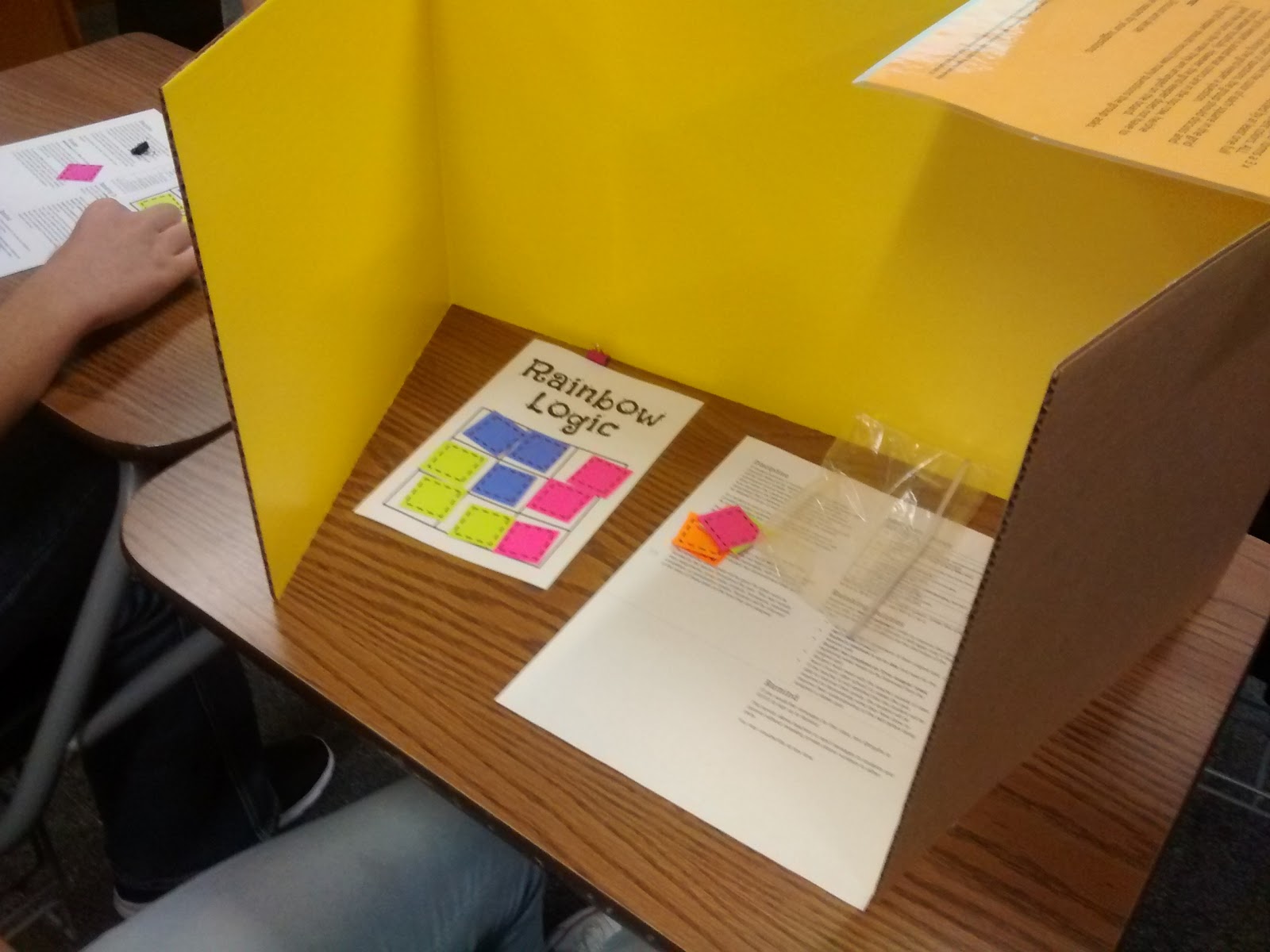
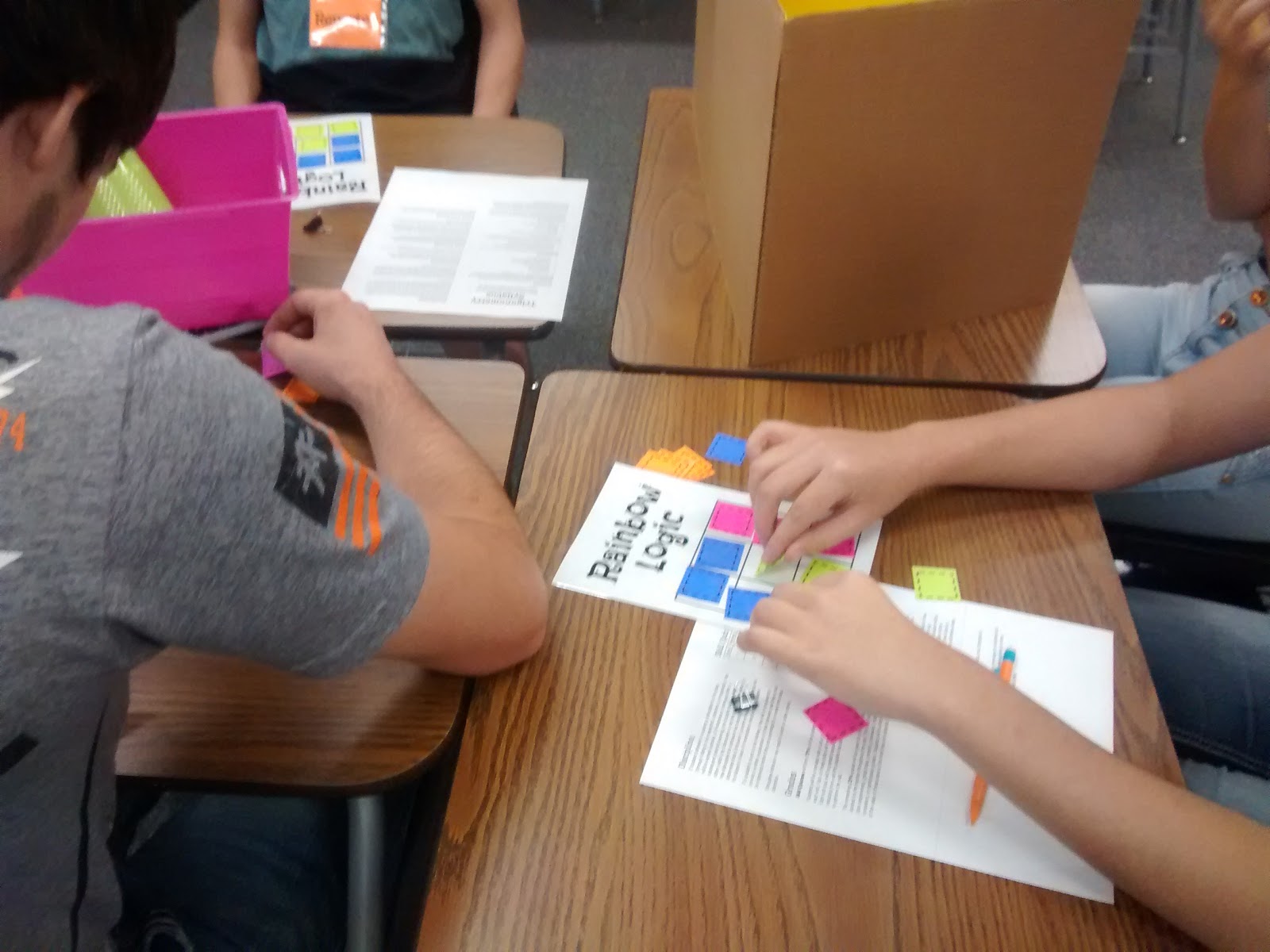
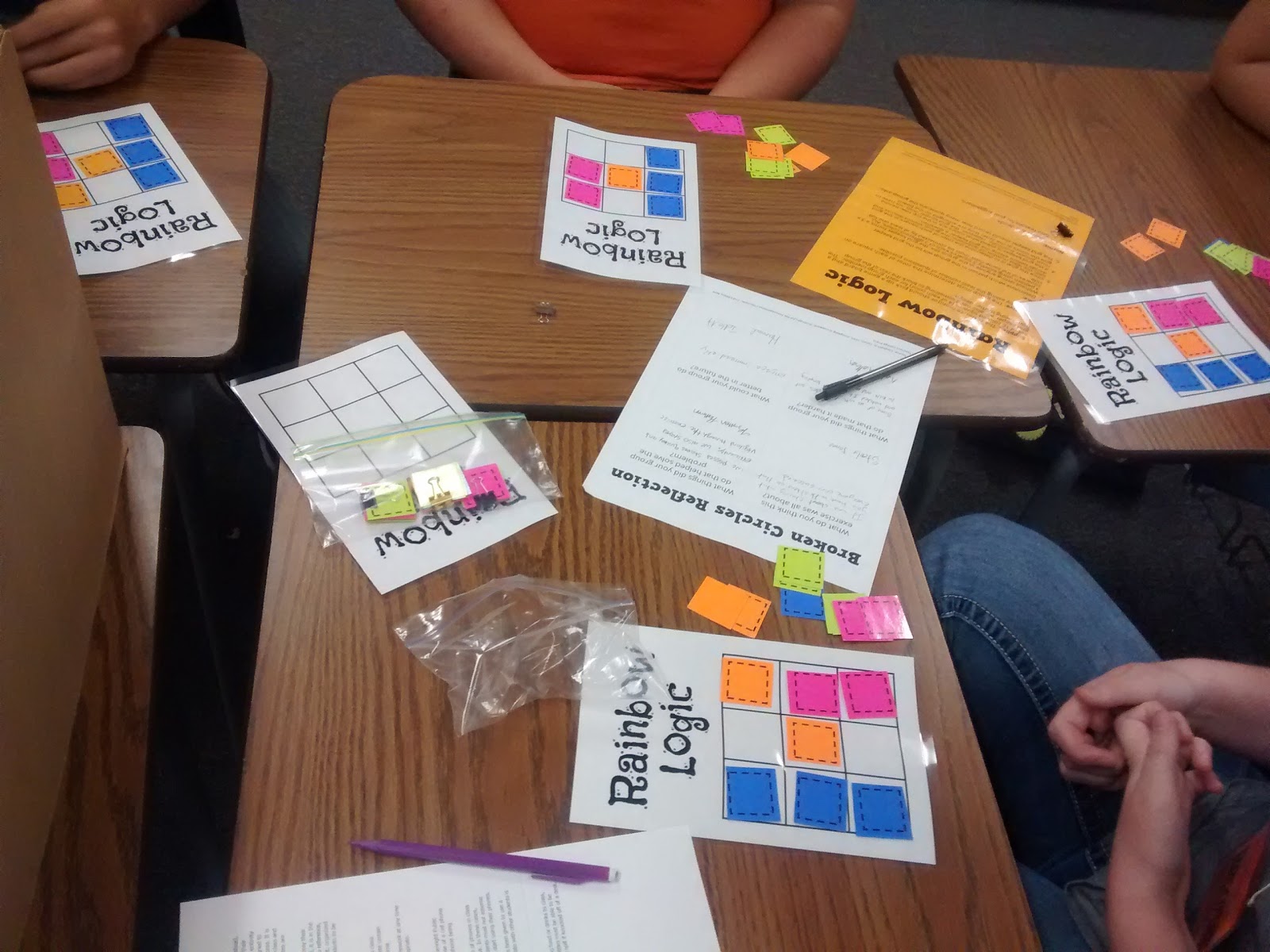
I definitely have gotten through near as many activities as I thought we would so far. Everything just takes twice as long as I think it will. I guess it’s better to overplan than underplan. 🙂
I’m realizing just how much practice with logic they need. I challenged them to figure out the grid in as few questions as possible. SO many of the groups took this to mean “Ask two questions and guess where things go after that.” Then, they would brag about solving the puzzle in only two questions.
Yeah, if you ask two questions and then every group member “guesses” a different solution, one of you will probably guess it correctly. Of course, they insisted that they weren’t guessing. We need to work a lot on making informed decisions this year. Whenever group work hasn’t gone as planned this year, I keep reminding myself that the activities aren’t magic.
But, they are revealing so many areas in which we need to work this year. And I guess that’s exactly what I’m going for during these first few days of school.
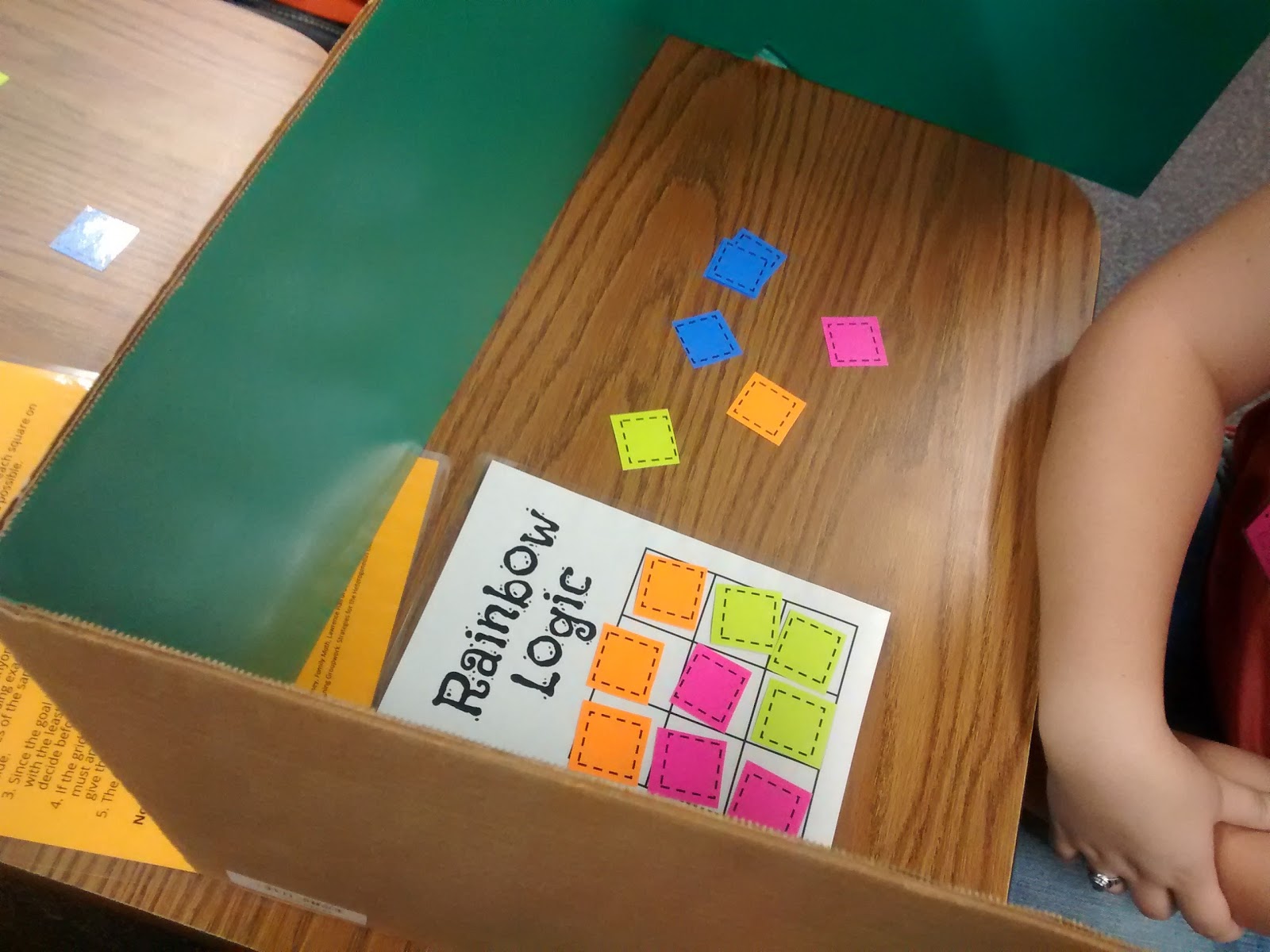
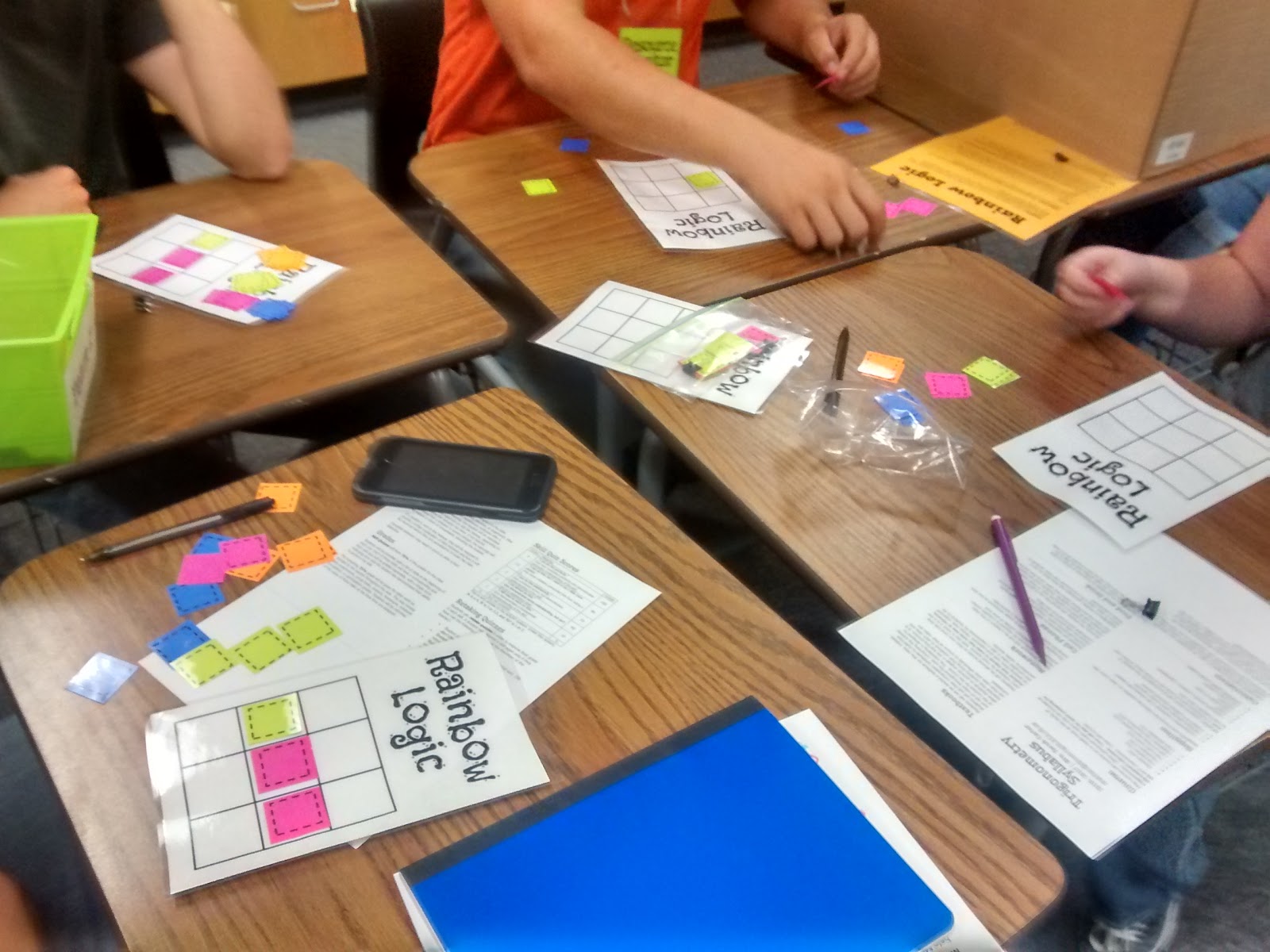

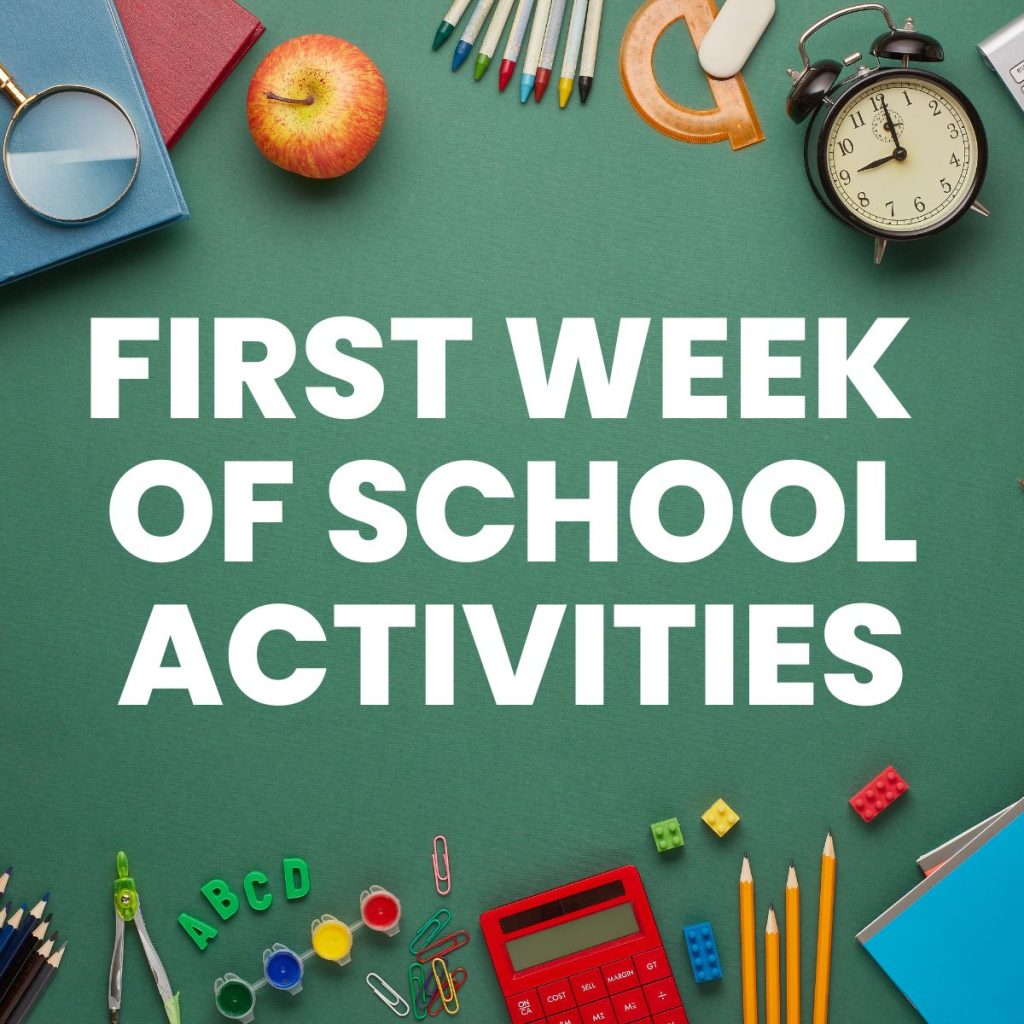
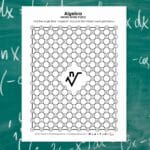

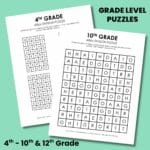
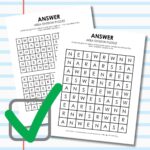

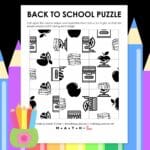
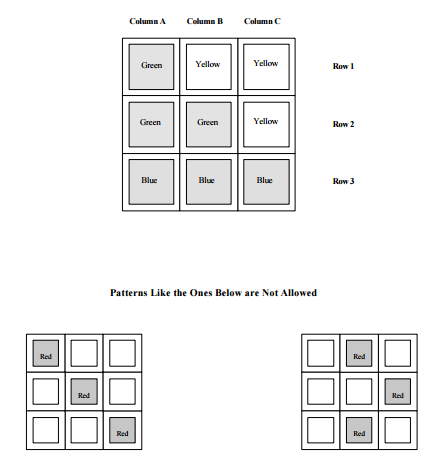
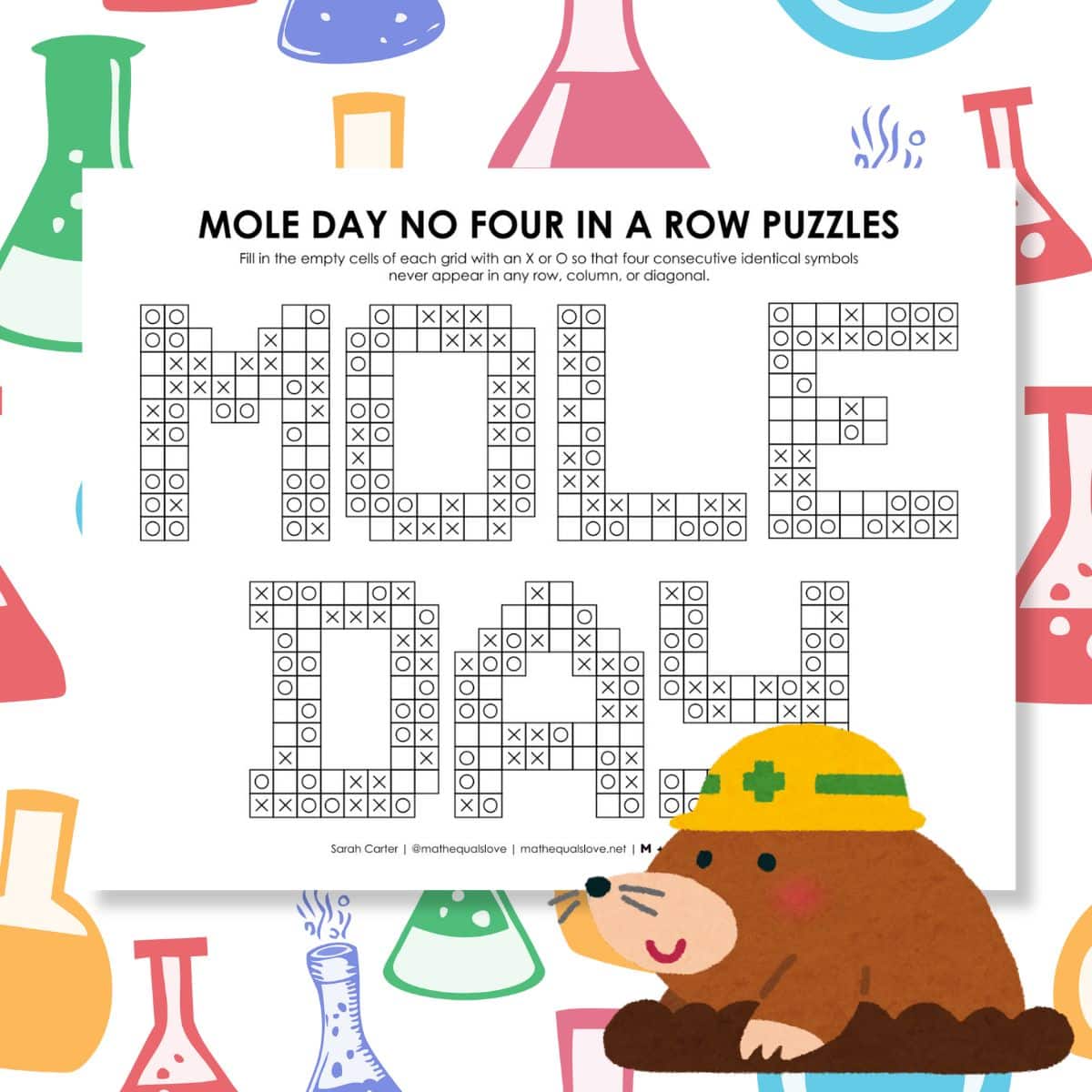


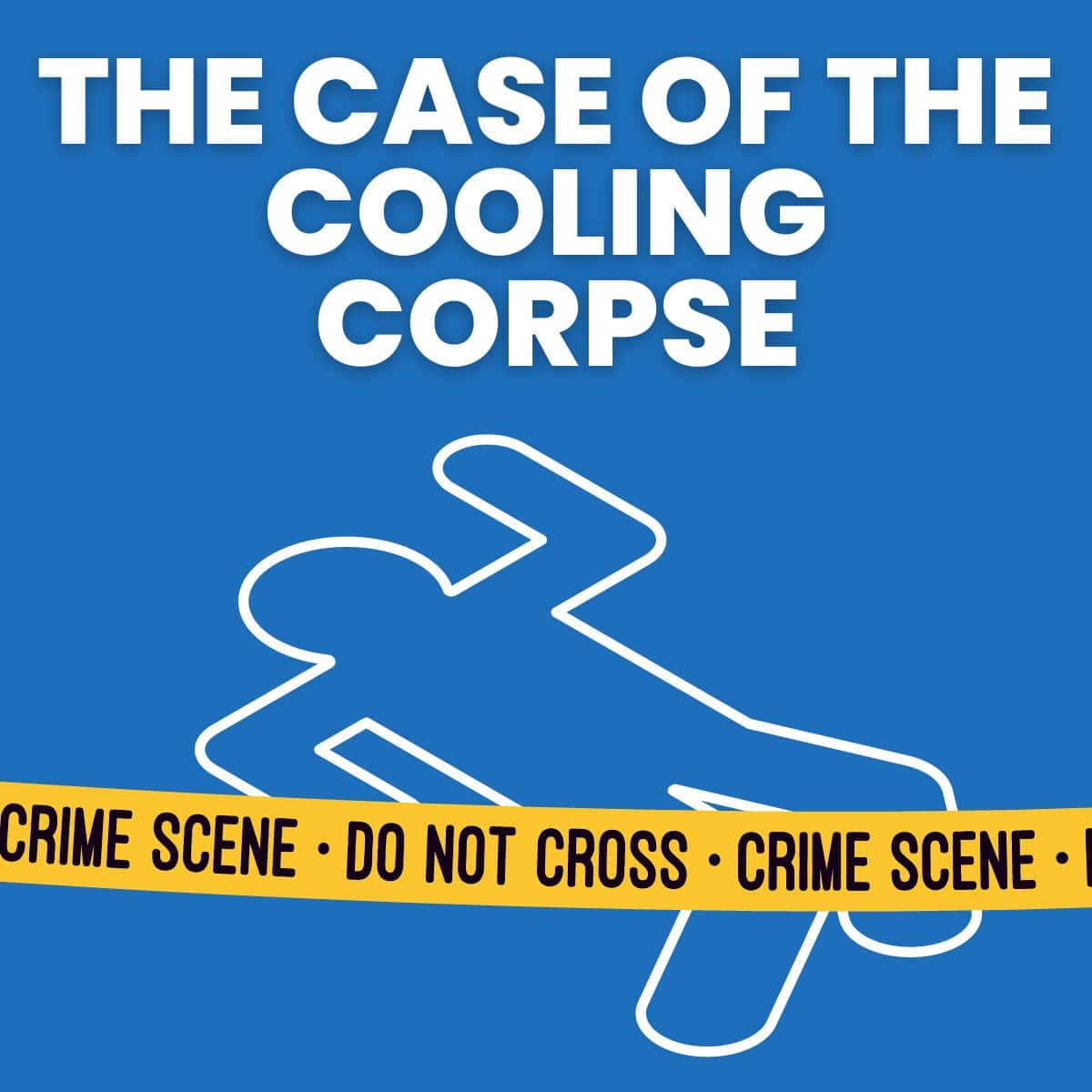

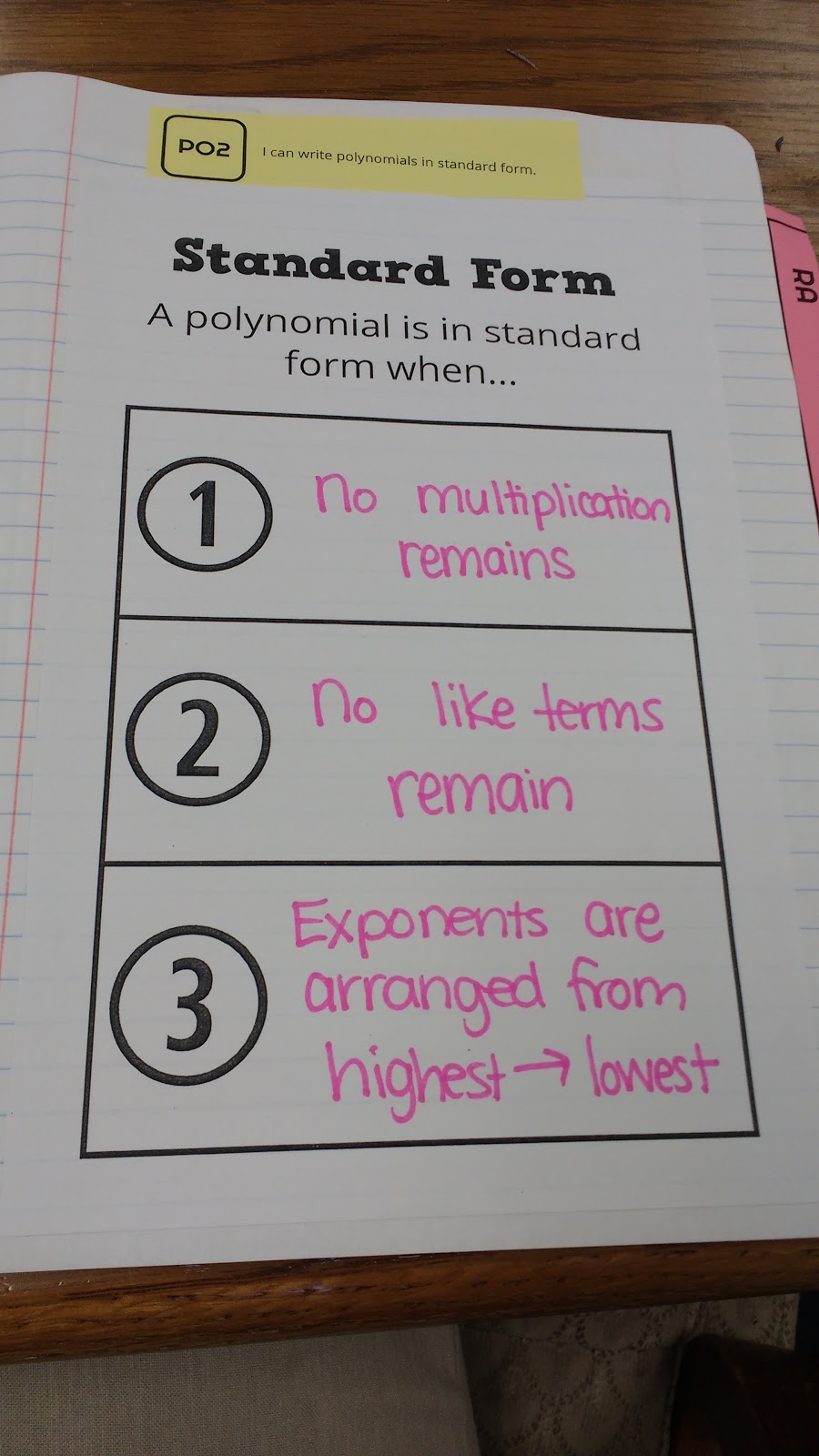
Sarah,
I really like this idea and hope to try it out with my students during the first. I would also suggest if you haven't already to look at https://www.youcubed.org/. There are some great group activities there.
I like the Rainbow Logic! Thanks for sharing!
This could also be a great activity right before a break, i.e. Christmas, to keep students focused and engaged while working on their group work skills.
Love the rainbow logic! And second Sarah Martin's mention of YouCubed!
This looks interesting! I love to collect exercises like these!
I used the broken circles last year to start a discussion on how to collaborate. The toughest part was letting them do it themselves!! Before they began the activity we had a good discussion about aspects of groupwork that work well and things that don't work well. Then they did the activity (I chose the groups) and we reflected in small groups and a big group after. I was struck with how mature my grade tens were! Excellent, meaningful discussion. It definitely helped to set the tone of collaboration for the rest of the year. I hope it works as well for you!